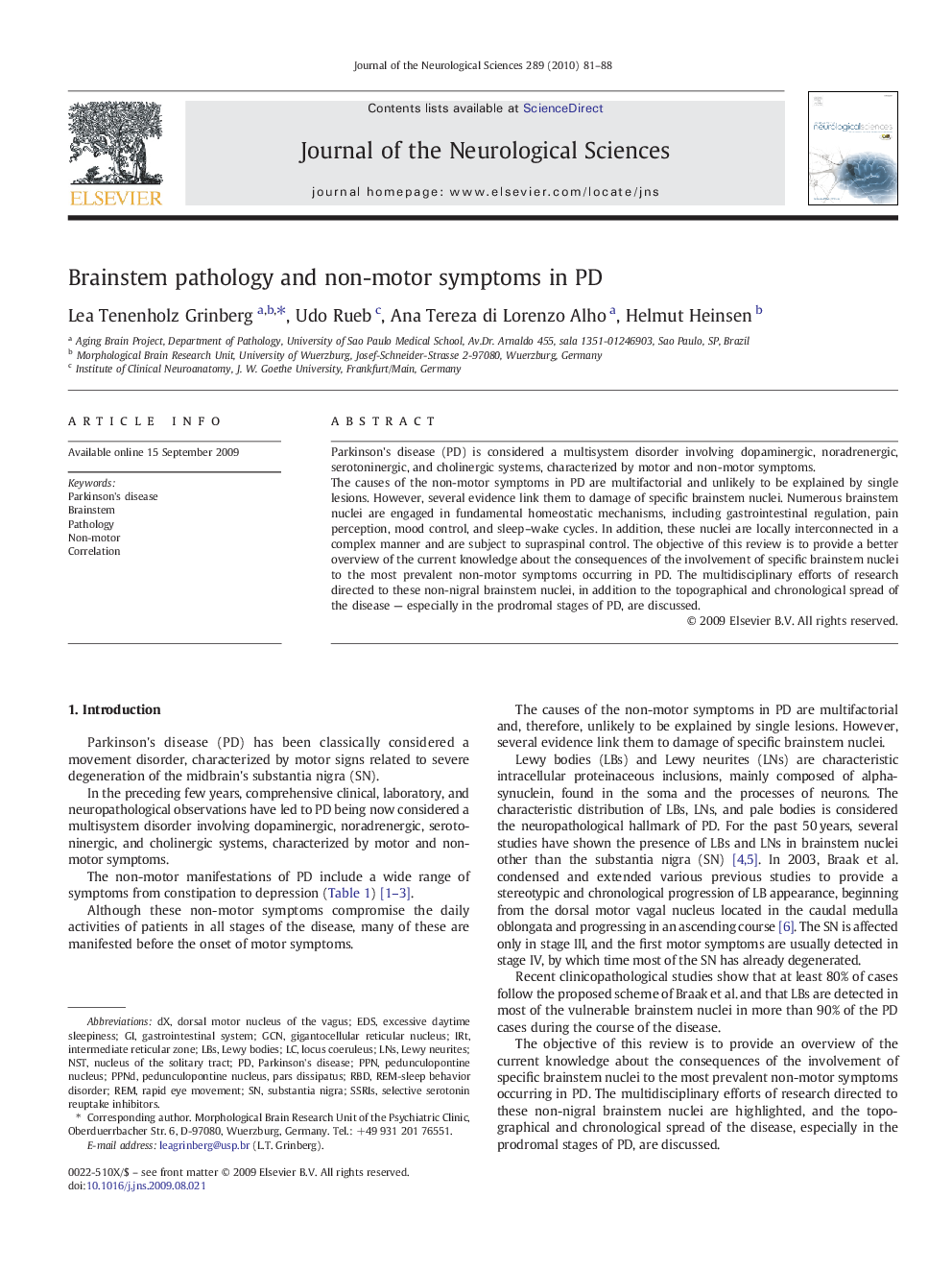| Article ID | Journal | Published Year | Pages | File Type |
|---|---|---|---|---|
| 1914874 | Journal of the Neurological Sciences | 2010 | 8 Pages |
Abstract
The causes of the non-motor symptoms in PD are multifactorial and unlikely to be explained by single lesions. However, several evidence link them to damage of specific brainstem nuclei. Numerous brainstem nuclei are engaged in fundamental homeostatic mechanisms, including gastrointestinal regulation, pain perception, mood control, and sleep-wake cycles. In addition, these nuclei are locally interconnected in a complex manner and are subject to supraspinal control. The objective of this review is to provide a better overview of the current knowledge about the consequences of the involvement of specific brainstem nuclei to the most prevalent non-motor symptoms occurring in PD. The multidisciplinary efforts of research directed to these non-nigral brainstem nuclei, in addition to the topographical and chronological spread of the disease - especially in the prodromal stages of PD, are discussed.
Keywords
EDSintermediate reticular zoneGCNLNsSSRIsREMLBSIRTNSTRBDLewy bodiesParkinson's diseasesubstantia nigrarapid eye movementexcessive daytime sleepinessgastrointestinal systemBrainstemLewy neuritesNon-motorlocus coeruleusPPNselective serotonin reuptake inhibitorsPedunculopontine nucleusnucleus of the solitary tractGigantocellular reticular nucleusdorsal motor nucleus of the vagusCorrelationPathology
Related Topics
Life Sciences
Biochemistry, Genetics and Molecular Biology
Ageing
Authors
Lea Tenenholz Grinberg, Udo Rueb, Ana Tereza di Lorenzo Alho, Helmut Heinsen,
